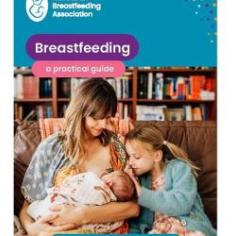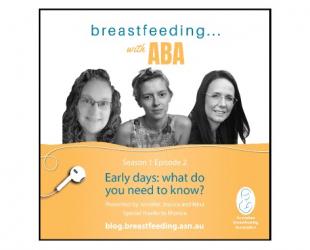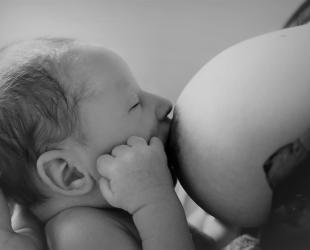Your newborn's first feeds

The very first milk your breasts make is called colostrum. It's thick and yellowish and is more concentrated than mature breastmilk. Colostrum is packed with protein and antibodies that help protect your baby from getting sick. It also helps your baby have their first poo, called meconium.
When your baby is born, their tummy is very small, so they only need tiny amounts of milk at first. The colostrum your breasts make in the first few days is just the right amount for them. Even if your baby arrives early, your milk is ready to meet their needs.
Healthy, full-term breastfed babies usually only drink the following amounts at each feed during their first week:
- 1 day old, 2 to 10 mL
- 1 to 2 days old, 5 to 15 mL
- 2 to 3 days old, 15 to 30 mL
- 3 to 4 days old, 30 to 60 mL.
Increasing milk in the early days
Between 2 and 5 days after your baby is born, your colostrum slowly changes into regular breastmilk. The milk becomes thinner and looks bluish-white. You’ll also notice that you start making more milk This is often called your milk “coming in.”
Your baby is born with a strong instinct to suck so feeding them often in these early days helps your body make more milk. As your baby’s tummy grows, they can take in more milk at each feed. This is all a normal part of building up your breastmilk supply.
How often will my baby feed?
It's common for newborns to breastfeed 8 to 14 times or more in a 24-hour period. This means your baby will be feeding very often – every 2 to 3 hours, including at night. Sometimes one breast may be enough, and other times they may need two.
Sometimes your baby will go to sleep between feeds and sometimes they will be awake and want to keep feeding. Many newborns have periods each day where they feed very frequently for a few hours. Often these cluster feeding periods are followed by a longer period of sleep.
If your baby is extra sleepy, you may need to wake them to make sure they get the milk they need.
Be guided by your baby's feeding cues and feed them whenever they show an interest. This is the way to ensure that your milk supply keeps up with your baby's needs.
Many new mums worry whether their baby is getting enough milk. We can't measure how much a baby takes when they breastfeed but even in the first week, there are some reliable signs that your baby is getting enough. Some of these relate to your baby's nappies. Read on to find out more.
Your newborn's first nappies

Your baby's first poo
The first poo your baby will be black and sticky. This is from the meconium that's in their digestive tract before birth.
By day 2
By day 2, baby's poo should be softer but still dark in colour. Over the next few days, the poos change to a greenish-brown and then to a mustard-yellow. As the colour changes they become less sticky and larger in amount.
Your baby should have at least 1 wet nappy on day one and at least 2 on day two.
Over the first few days
Your baby should have at least 3 wet nappies on day three, at least 4 on day four and at least 5 on day five and each day after that.
Over the first few days, salts of uric acid in your baby's wee may leave a rusty, orange-red stain on the nappy. This is normal during this time. If you see this after day 4, check with your doctor.
From day 5 onwards
Provided your baby is only having breastmilk:
They will have at least 5 wet disposable, or 6 very wet cloth nappies in 24 hours. The nappies should feel heavy after use with about 60g of wee, like the weight of a large egg.
Baby's wee will be pale. If your baby's wee is dark and smelly, this is a sign that they aren't taking in enough milk.
Baby will do plenty of soft poos of a yellow-mustard colour. Under the age of 6-8 weeks, babies usually have three or more runny poos a day. Poos are about the size of the palm of your baby's hand.
This video from our Breastfeeding Basics series explains what you can expect in the first week.
© Australian Breastfeeding Association October 2025
Over 200 pages of must-have info for the first year of your baby's life.
Free with your ABA membership
Breastfeeding: a practical guide




